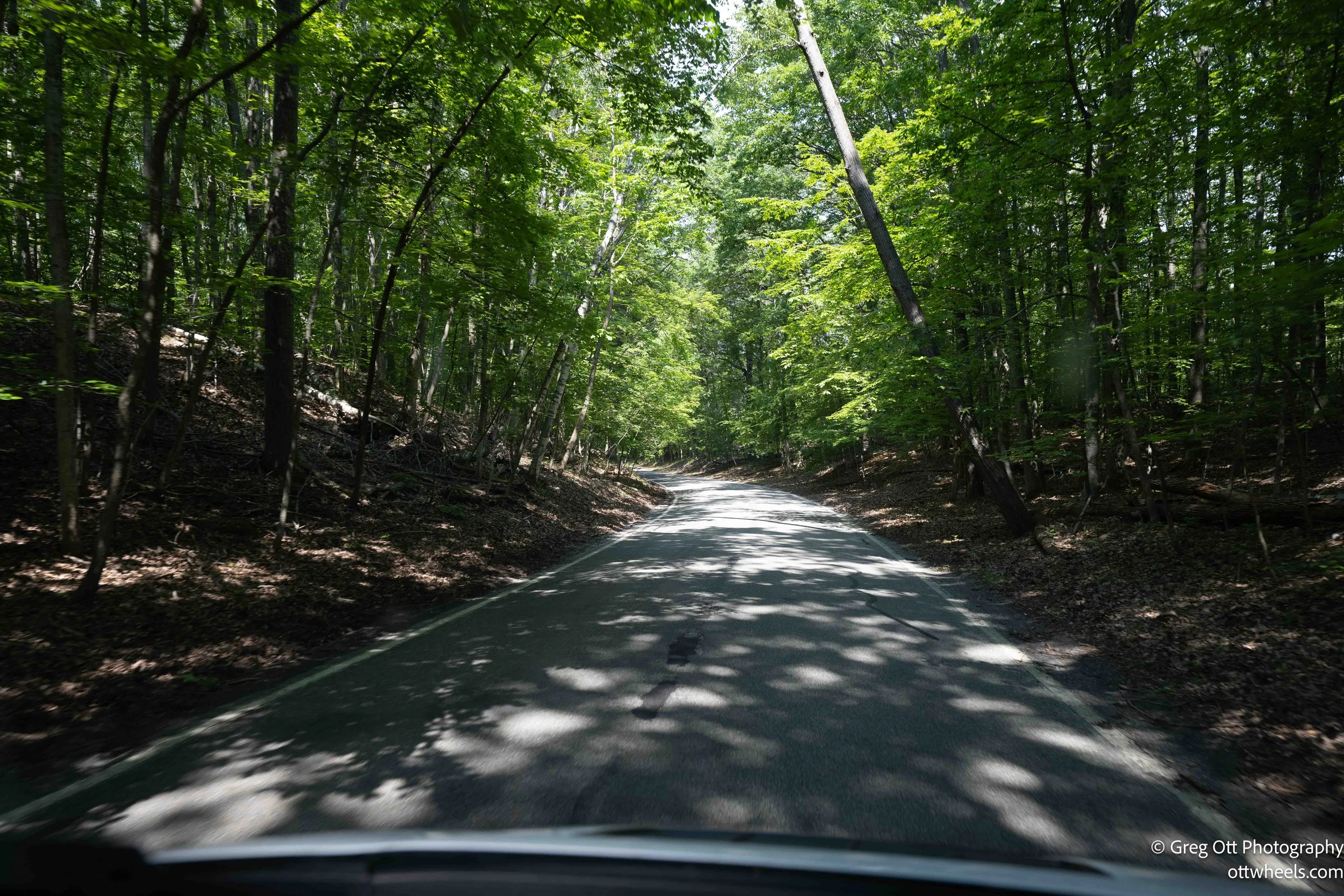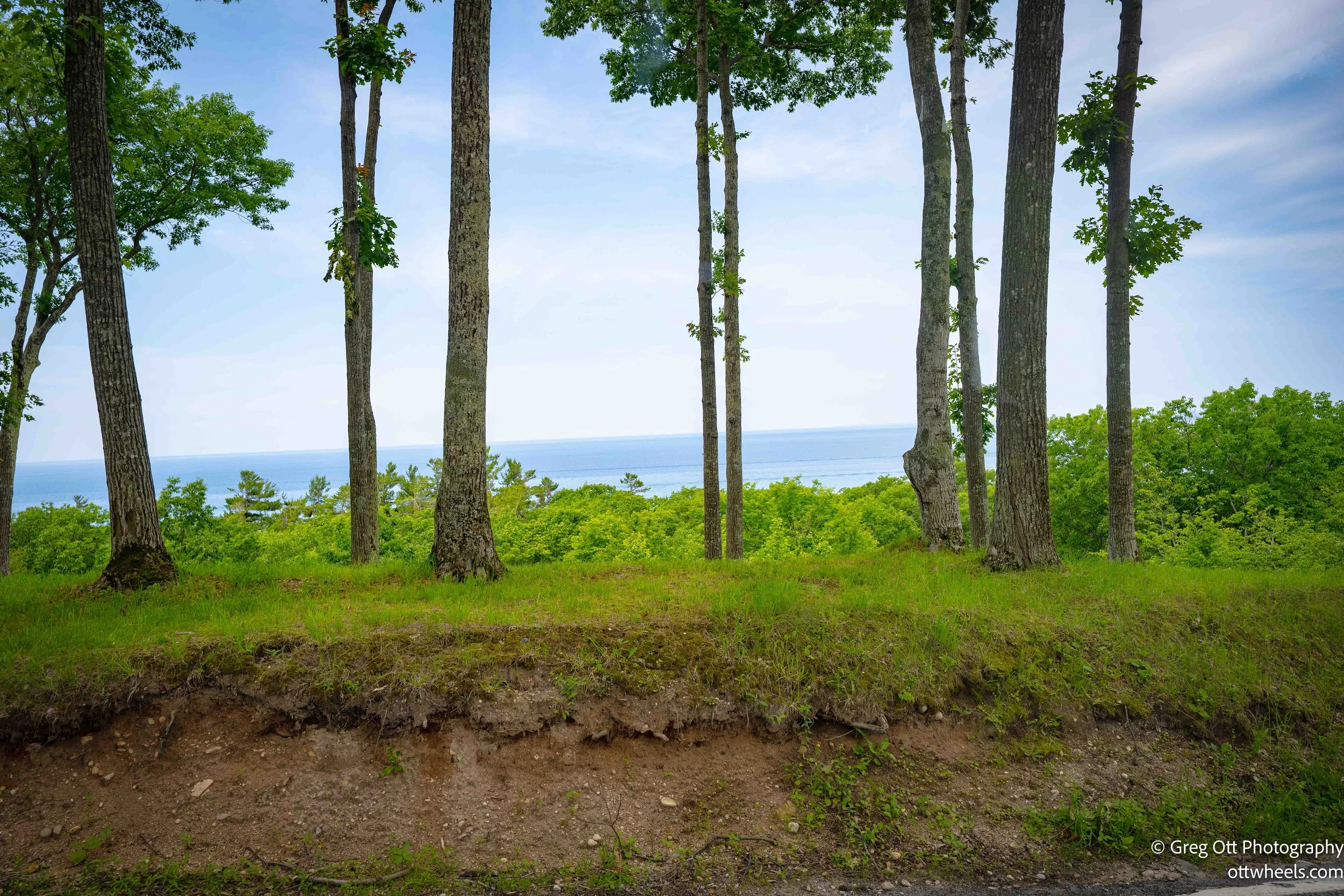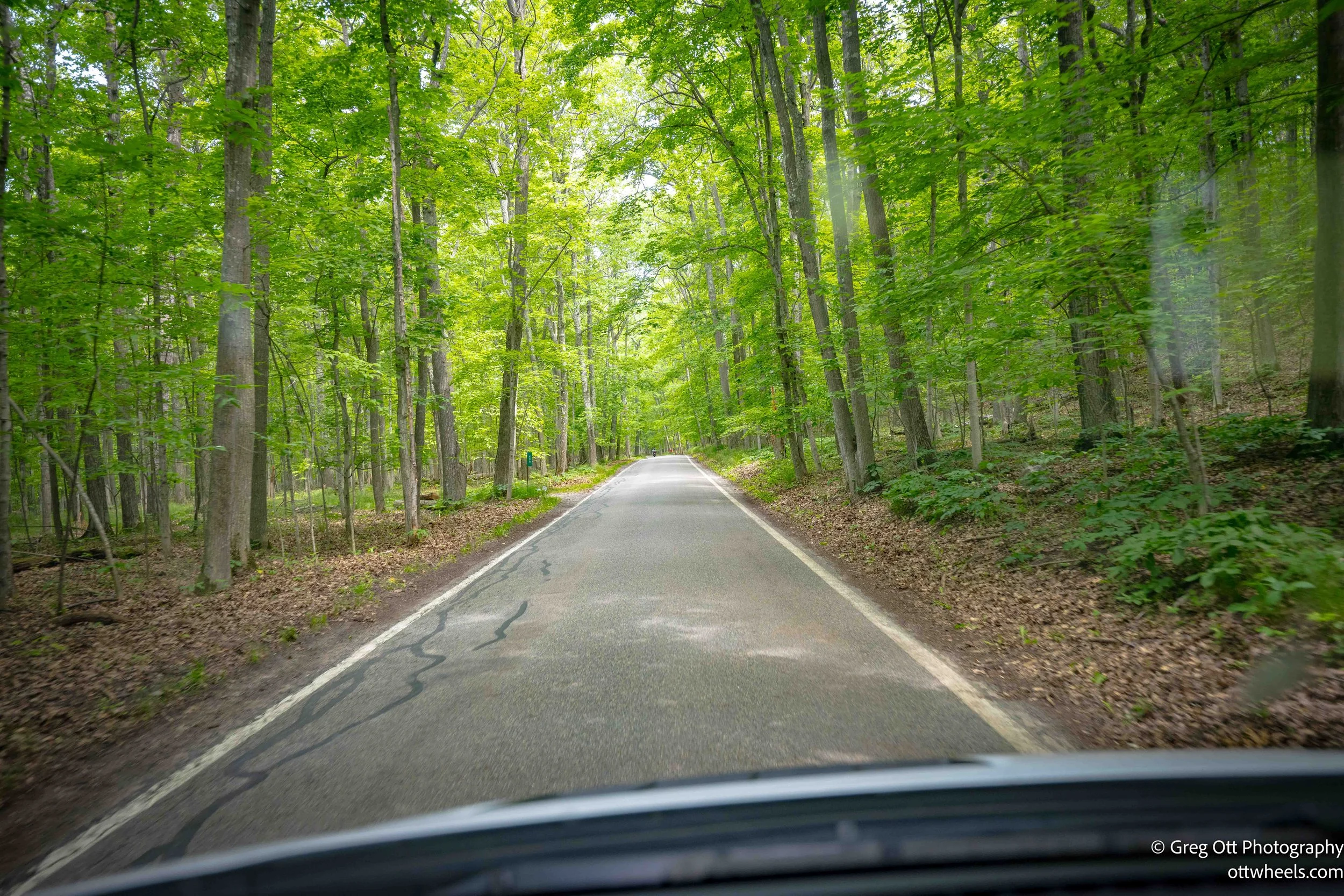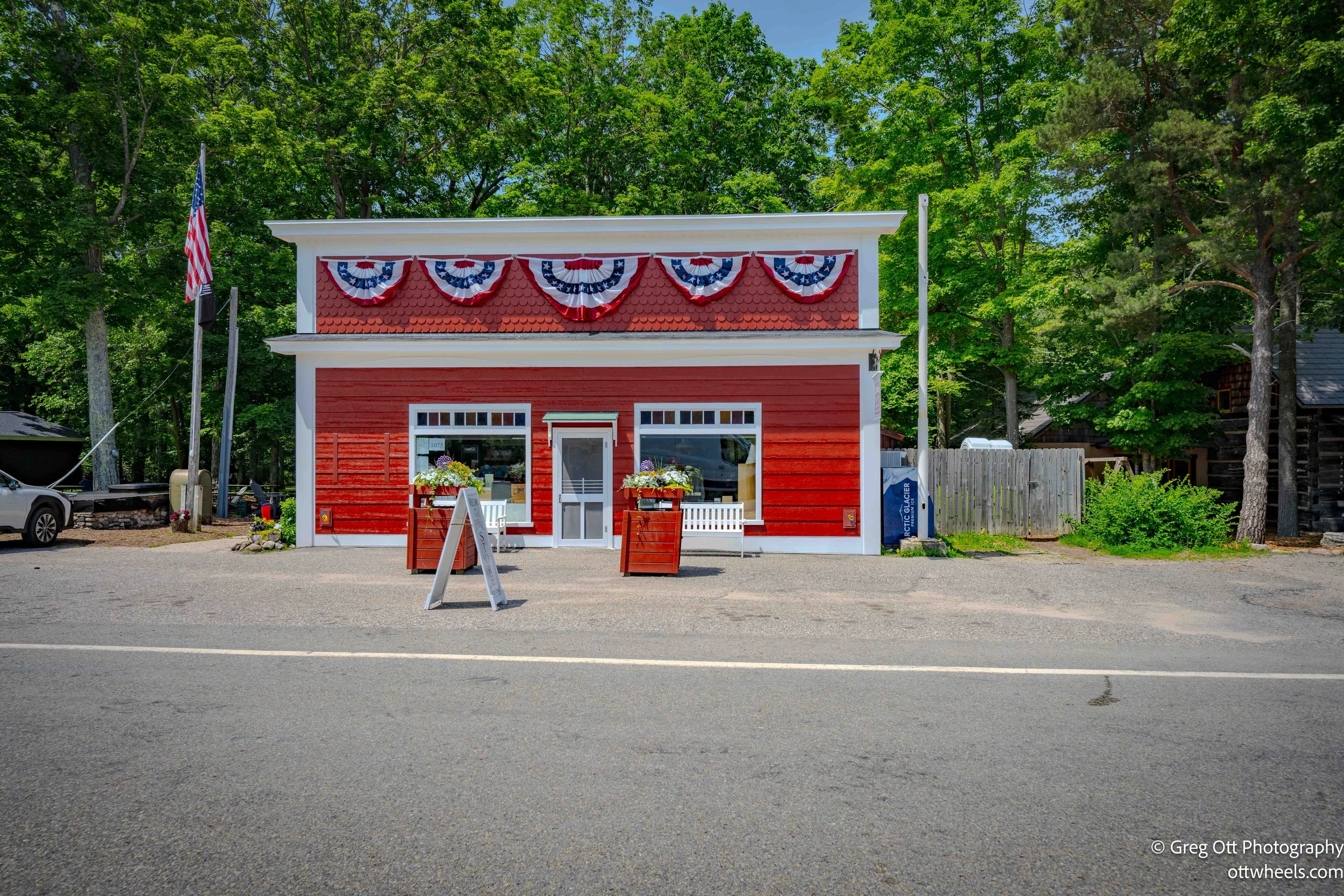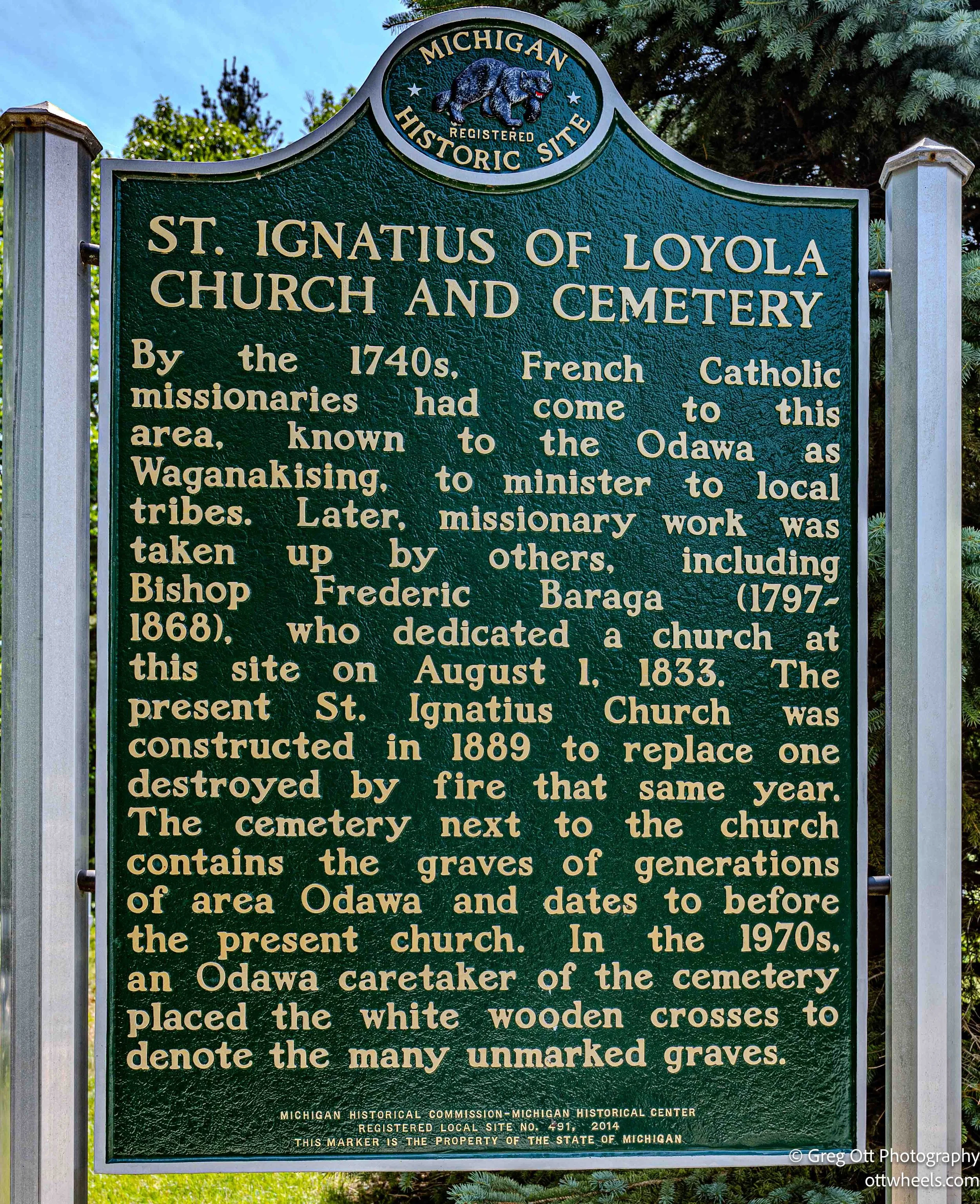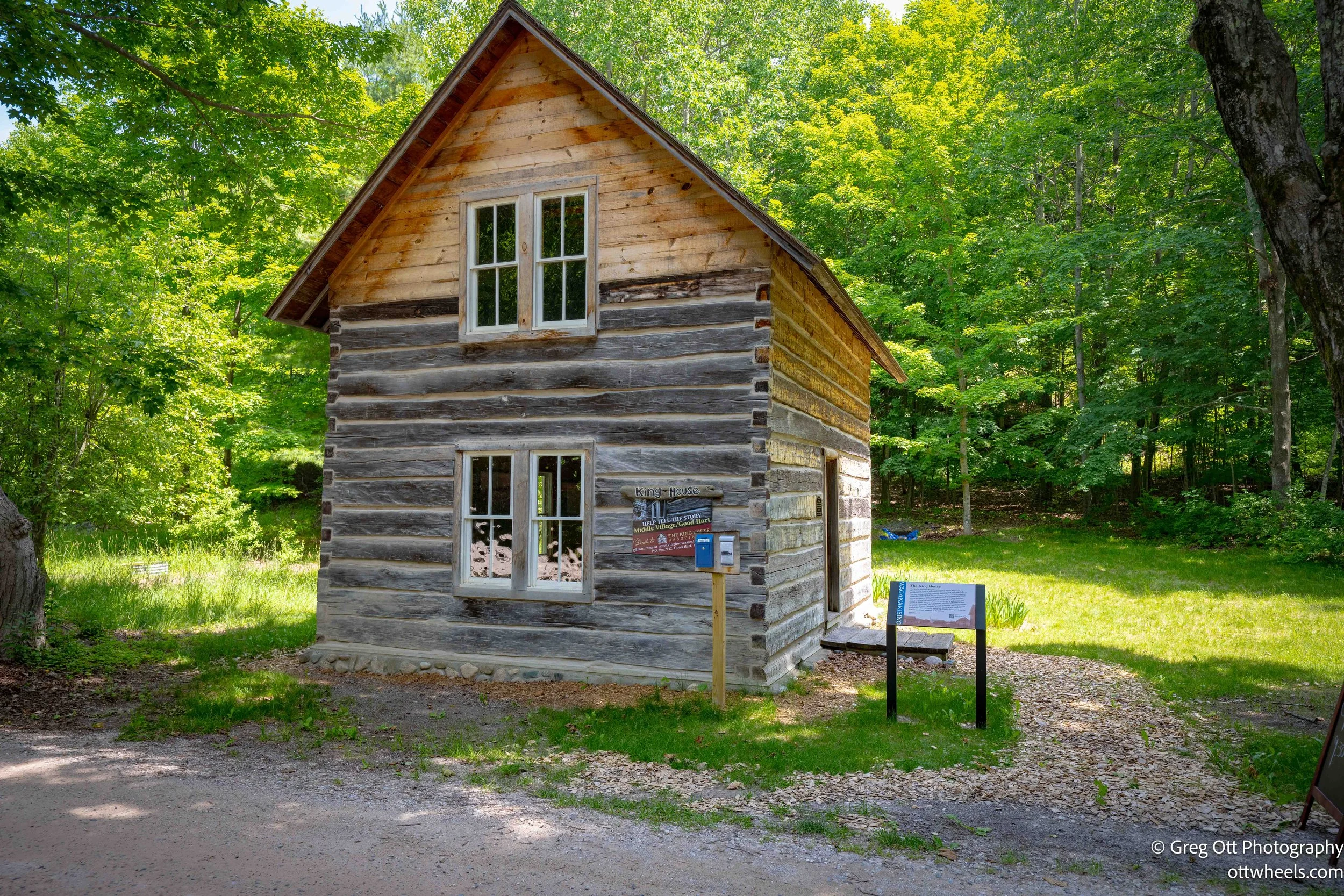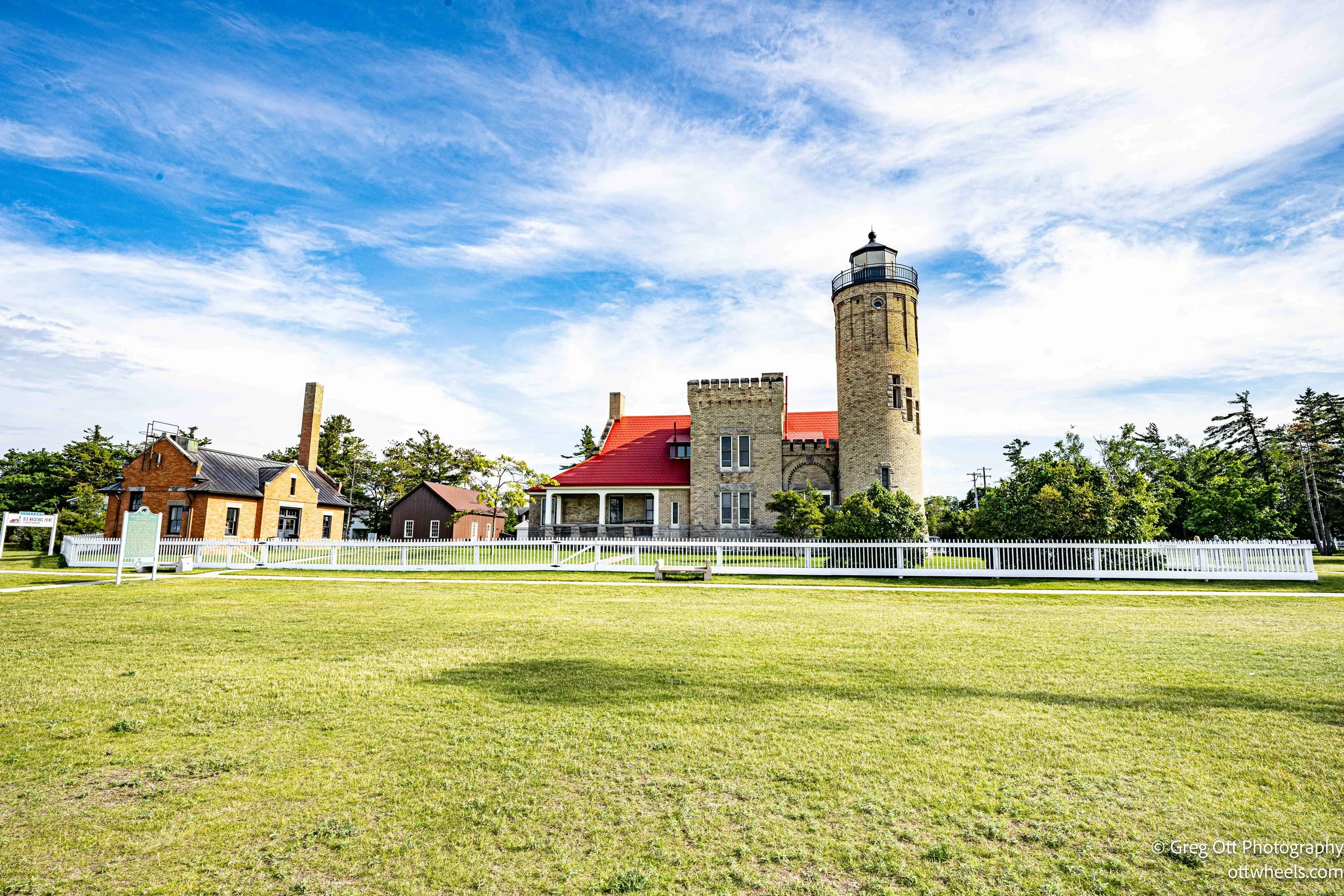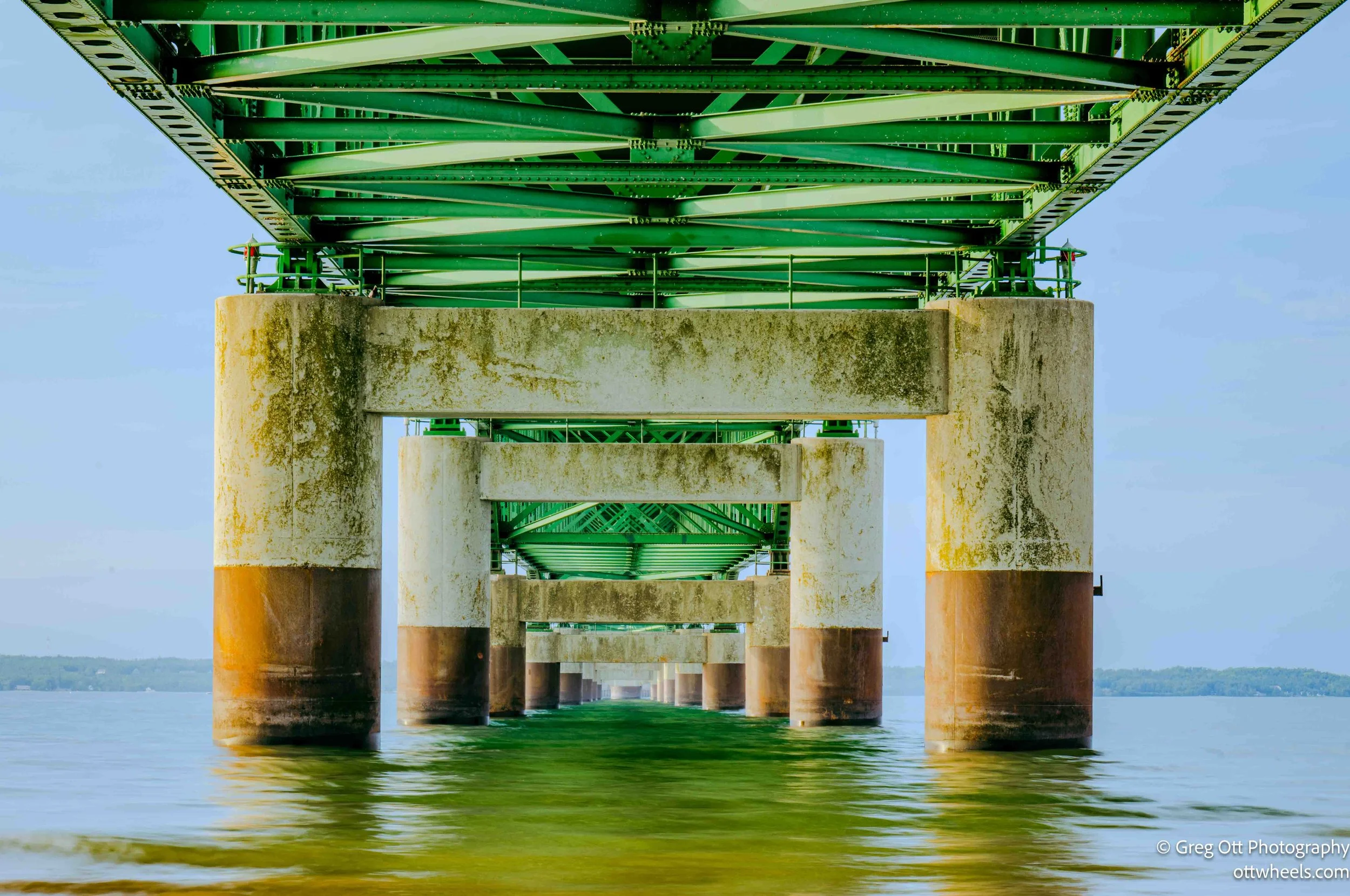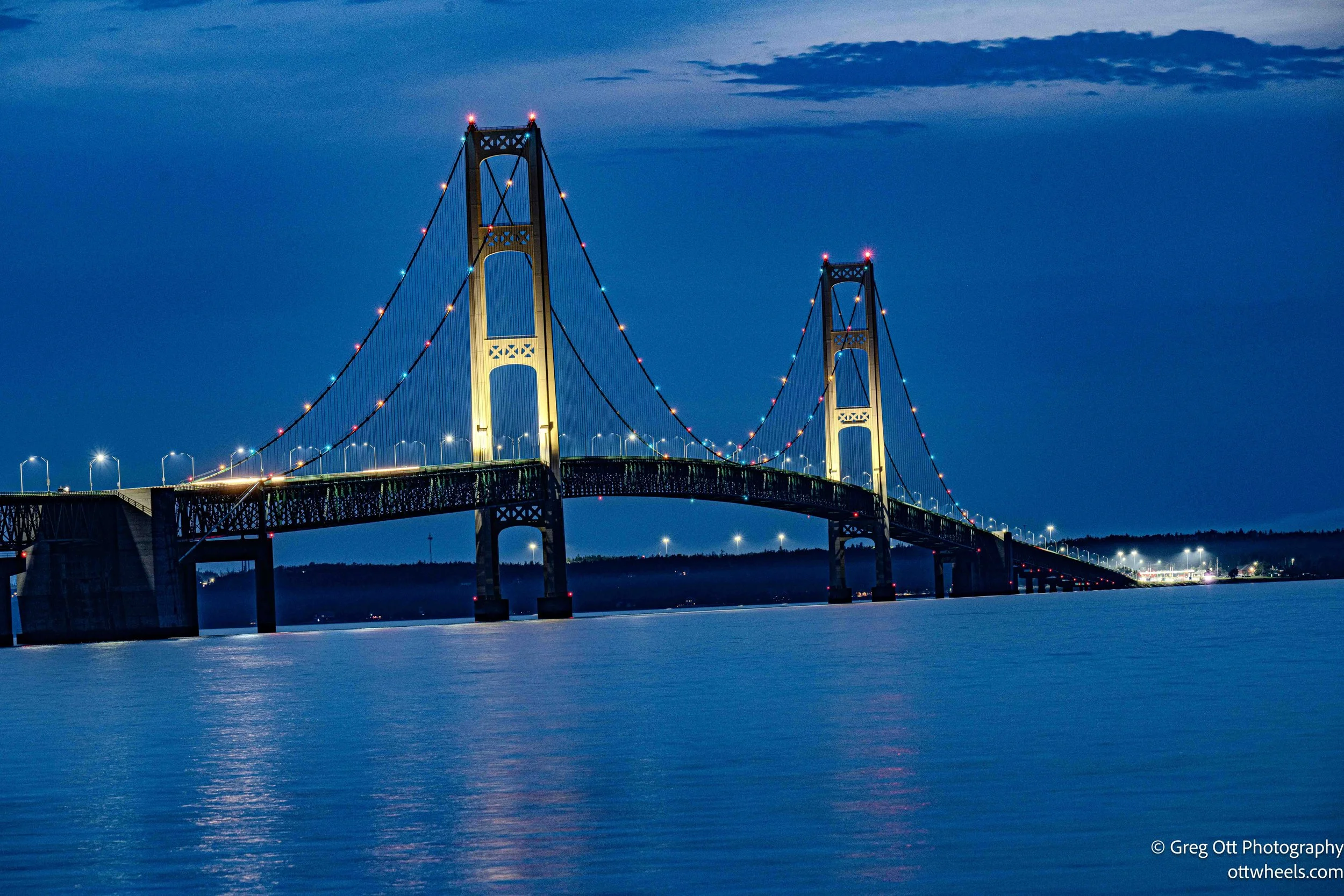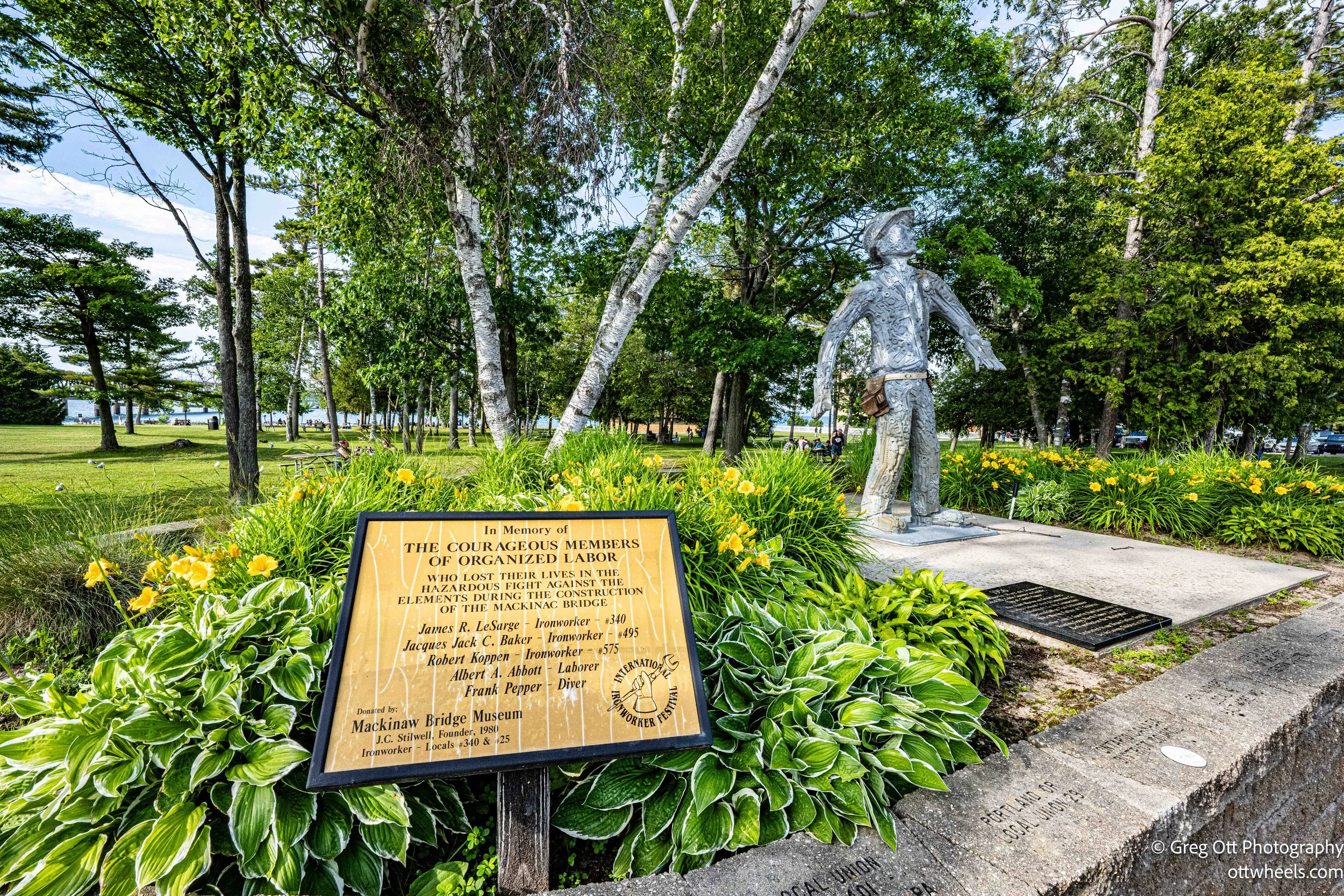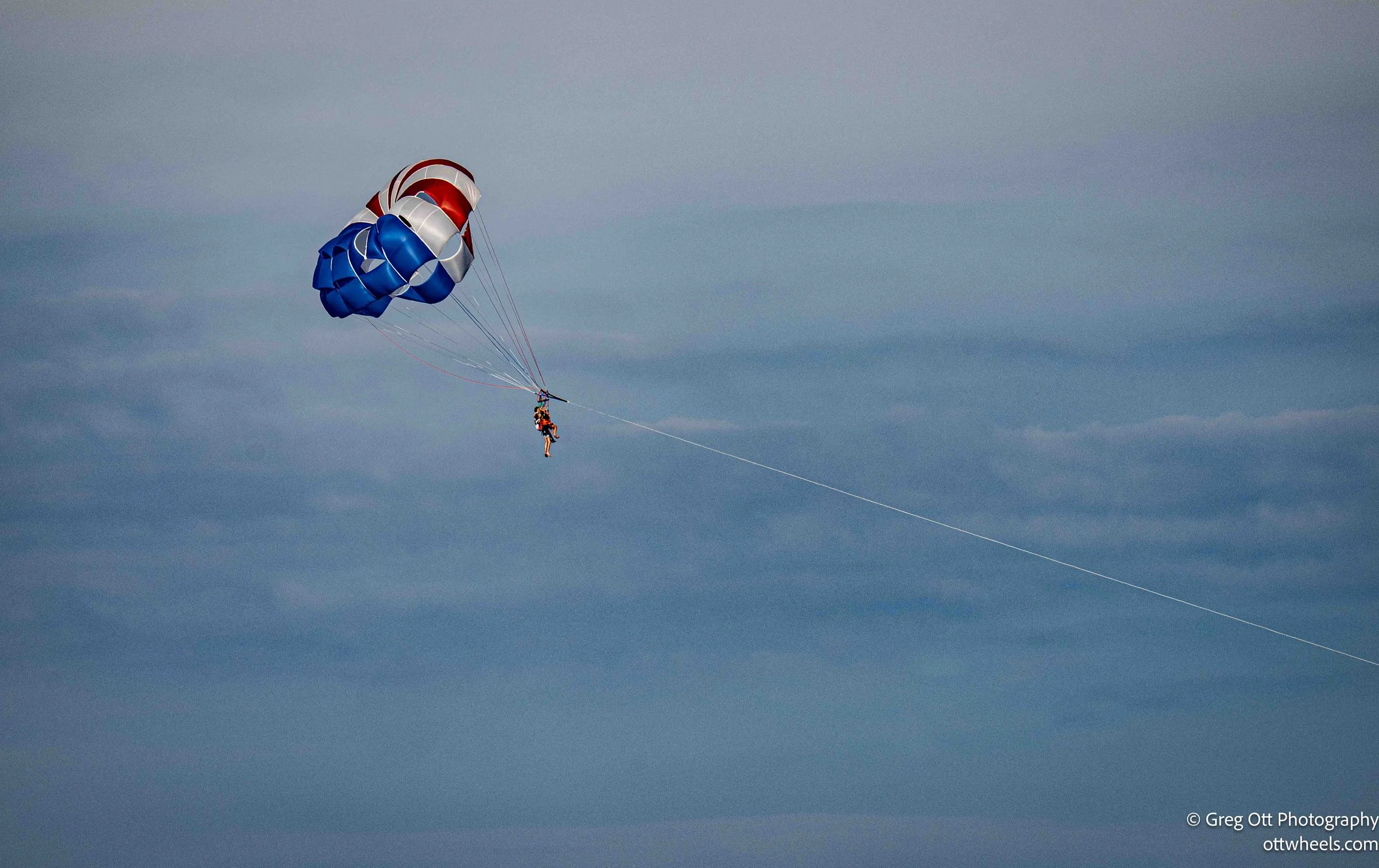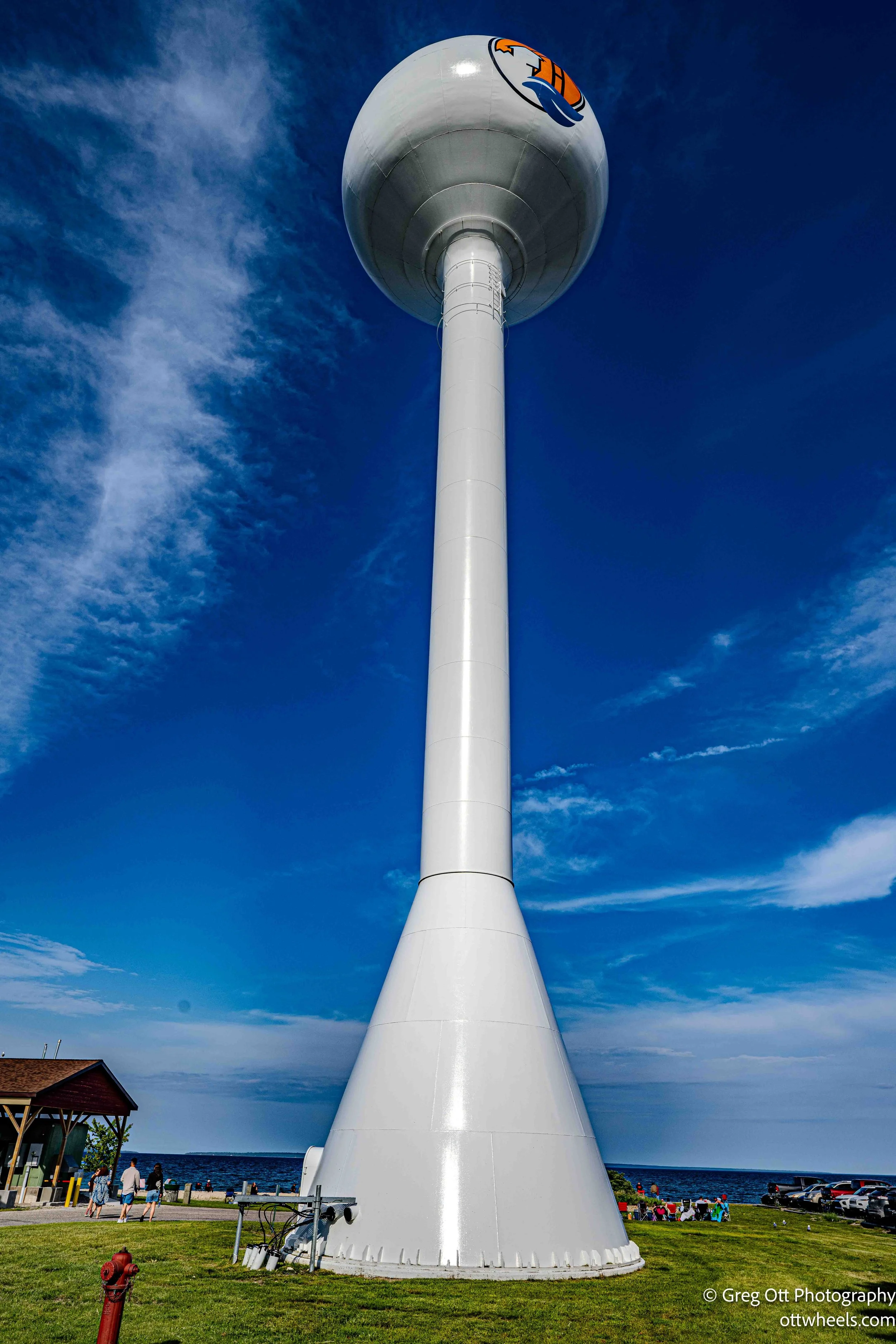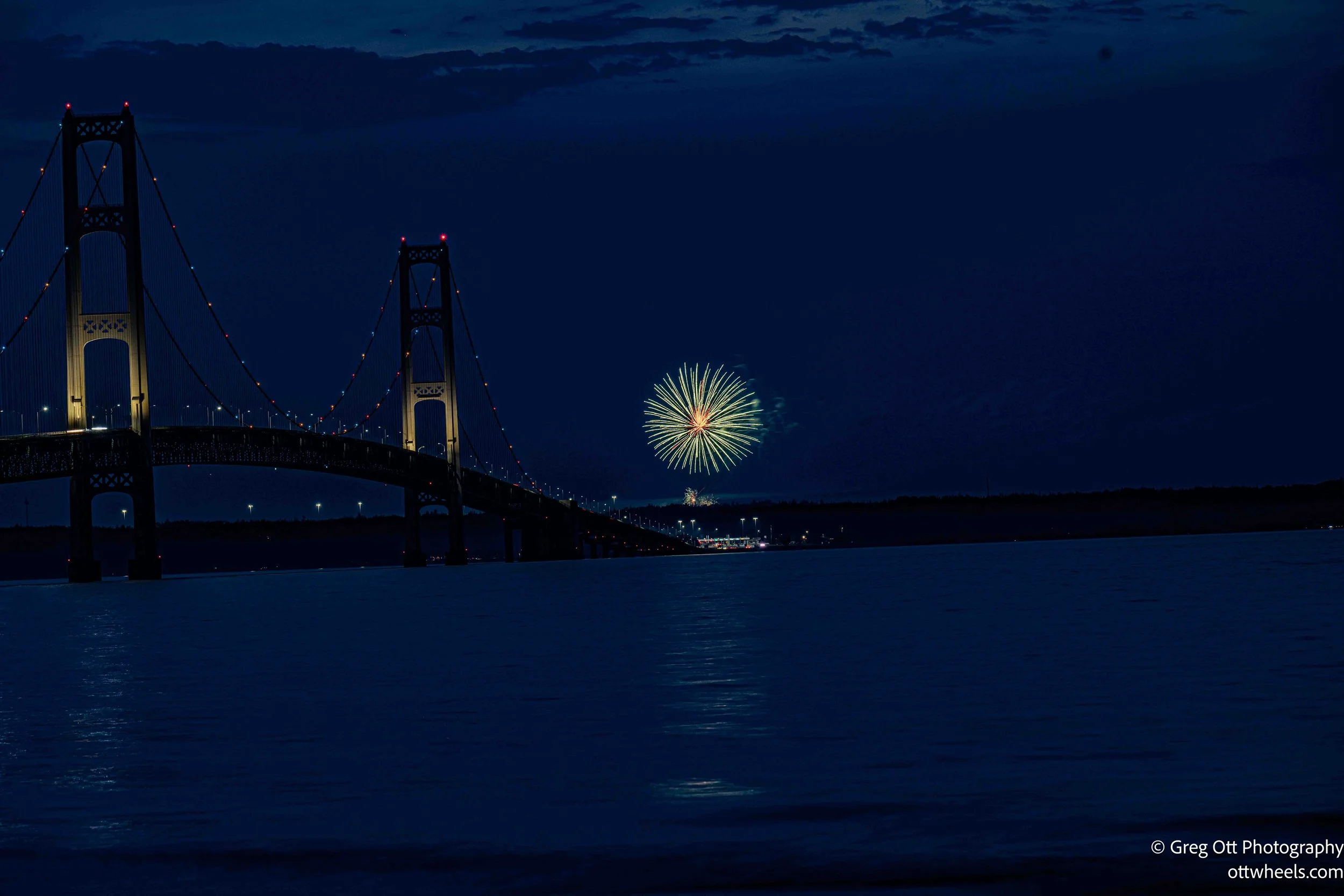Tunnel of Trees, a Hot Dog, and Michigan 4th of July
I woke up at Cracker Barrel around 7 and decided blueberry pancakes were in order. I was craving pancakes anyway, and it felt like a fitting thank-you to Cracker Barrel for letting me spend three nights in the back lot.
I rolled out of Traverse City heading north and found a coffee shop. Inside, the guy behind the cash register just stared at me — no “good morning,” no “What can I get you?” It was like his parents made him work all summer when he’d rather be gaming or at the beach with his friends. Anyway, I placed my order and got out of there fast, caffeine in hand.
It was the 4th of July, so I wasn’t sure what to expect traffic-wise. The Tunnel of Trees was my goal — that scenic stretch of M-119 that starts in Harbor Springs and winds up the Lake Michigan shoreline to Cross Village. I’d pictured a narrow road, trees arching overhead in that storybook tunnel effect.
I pulled into Harbor Springs around 11:30 a.m., and the town looked ready for a parade. Chairs lined the street, people were weaving across Main Street to meet friends, and I felt like part of an accidental parade myself. A few kids even waved. It seemed like a fun little place: tidy, with small shops and inviting coffee spots — but I wasn’t brave enough to fight holiday congestion to park.
Harbor Springs
So, naturally, I made a few wrong turns and drove right out of town on the wrong road. Five miles later, it hit me: where were the trees? I should have been deep in the tunnel by now. A quick Google check confirmed it — I’d plugged in the wrong destination. So, back I went, rejoined M-119, and headed toward Cross Village.
Tunnel of Trees - M119
Good Hart: General Store / Post Office
I stopped in Good Hart, which turned out to be just a few buildings — though I’m sure there are houses sprinkled around that you can’t see from the road. The general store doubled as the post office, which felt perfectly small-town. I spotted a stack of cherry pies in the back and asked if they sold single slices. No luck — they had all kinds of other slices, but not cherry. So, I made lunch in the van instead, people-watching as a steady flow of tourists came through, most of them loaded with beach gear.
After lunch, I popped back in for a slice of blueberry pie. Tried to pay with a card — nope, $10 minimum. I told the woman, who was both cashier and postal worker, that I just wanted one slice. She smiled and said, “This one’s on me.” So, thanks to her, I enjoyed that blueberry pie for free.
Saint Ignatius Catholic Church
Inside the church, a birchbark canoe and a pair of snowshoes hang from the walls (never saw that before). They’re simple but powerful symbols of how the French missionaries and the Odawa traveled these lands — paddling the lakes in warm months, crossing snowdrifts in winter. They speak to the shared endurance and cultural exchange that made this more than just a mission — it’s a reminder of a time when worlds met and found ways to move together.
I saw people heading to the beach, so I followed the boardwalk from the church parking lot. Five minutes in the blazing sun and big crowds were enough — I hustled back to the van for shade and quiet.
King House
As I left the church, I noticed the King House nearby — a weathered log cabin, standing quietly under the trees. This was once the home of Chief Joseph King, a respected leader of the Little Traverse Bay Band of Odawa Indians in the 1800s. More than just a family house, it was a gathering place for councils and conversations that helped the community stay strong and connected to the land — and to the church right next door. A living piece of history that still feels present, even in its stillness.
Coming out of the forest at Cross Village, I stopped — hoping, honestly, for ice cream. I’d pictured a bigger town, something like Harbor Springs. Instead, Cross Village is tiny: a few gift shops, a small lodge, and a gas station. But the gas station did, in fact, have ice cream — so, success.
While standing in a long line to pay, I noticed the woman behind me was on crutches, missing a leg, and in front of me, a man had a prosthetic arm. It was one of those odd moments where you wonder what small-town stories you’re stumbling into.
Ice cream in hand, I took the less-traveled scenic route to Mackinaw City — which was scenic, but the roads were awful. Somewhere along the way, I rolled into Bliss, Michigan, and stopped at the Bliss Store for a drink. This little general store looked like it hadn’t changed since the ‘40s or ‘50s. An older woman behind the counter was ready to chat. She asked where I was from, what I was doing in Bliss, and we talked for ten minutes before she sent me off with a warm “Safe travels.”
I stopped to take a few photos of the Mackinac Bridge. This iconic suspension bridge spans the Straits of Mackinac, connecting Michigan’s Upper and Lower Peninsulas while sitting between Lake Michigan and Lake Huron. Opened in 1957, the “Mighty Mac” stretches nearly five miles, making it one of the longest suspension bridges in the world. Before it was built, travelers had to rely on ferries to cross the often unpredictable waters — the bridge transformed the region by making travel, trade, and tourism much easier year-round. I spent some time trying to find a fresh perspective to photograph the bridge’s massive towers and sweeping cables.
Memorial To Iron Workers
Nearby, I came across a quiet memorial to the ironworkers who built this engineering marvel. A small plaque lists the names of the five men who lost their lives during construction, along with how they died — a sobering reminder of the risks and sacrifices that went into building such an ambitious structure. Contrary to some local legends, no one is actually entombed in the bridge itself. Just standing there, reading those names with the wind whipping across the straits, you really feel the human story behind the steel and concrete.
I walked into town, snapping shots of people celebrating the 4th. I was also on a mission for a 4th of July hot dog — a small tribute to my mom and her cousin Shirley, who both loved their hot dogs and fireworks.
I stepped into the Seven Elements gallery when I saw some photos through the window. Inside, I met Vicki Logan, a photographer who gave me tips for what to see in the Upper Peninsula. She also told me about Wienerlicious up the street — which, with a name like that, was exactly where I needed to get my hot dog. Dijon mustard and sauerkraut — perfect.
Back at the van, I wandered down for a view of the Mackinac Bridge and tried to figure out where the fireworks would be. I asked about fifteen people and got fifteen different answers. Turns out the fireworks were in town, behind the beach crowd, not over the water as I’d thought. Meanwhile, across the straits, I could see distant fireworks from the other side where Lake Michigan and Huron meet. So, the Mackinaw City show? I basically missed it.
While setting up for some shots anyway, a little girl, maybe 19 months old, started waving shyly at me. I waved back, which made her hide behind her parents. We chatted for a bit — those little moments make up for the missed fireworks.
By 11:30 p.m., I tried to reach the trailhead I’d planned for the night, but the roads were jammed with cars leaving town. I pulled over downtown and dozed off for an hour while the chaos cleared. When I finally made it to the trailhead, there was a bright sign: “No Overnight Parking or Camping.” Classic.
Fifteen miles later, I rolled into a Walmart lot, joined five other camper vans, and was out cold within minutes.
Blueberry pancakes, narrow tunnels of trees, cherry-less pie, historic churches, and a hot dog for Mom — just another day rolling through Michigan.


